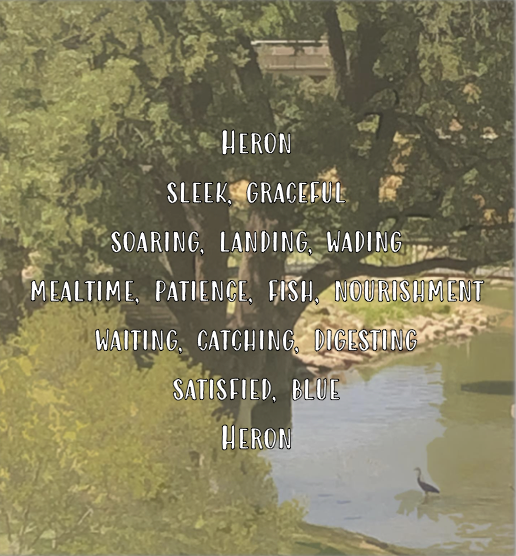During the Project Wild certification training that some of our members participated in over the summer, we were given a field assignment called, “Urban Nature Search”. We were instructed to select a study site such as a park, vacant lot, or school grounds and then use the “What’s Wild in Your City? Activity Cards” worksheet to guide us in observing the wildlife and plant life at our chosen location. While making our observations, we were also told write down words, emotions, and reflections that would then become the foundation for a poem we were tasked with writing.
For the homework, I chose the park outside my office window so that I could spend my lunch break and moments throughout the day glancing outside and noting what I see. From my desk, I have the most amazing view of Shanley Park in Granbury. Built around a small canal, the area, while heavily altered by man, is still home to an abundance of wildlife. Just on my observation day I saw squirrels, a variety of birds (including waterfowl), dragonflies, butterflies, and other flying insects, turtles, fish, and of course, lots of people and their pets. On another occasion I’ve seen a snake on the trail and recently I’ve watched a few hummingbirds flitter about a tree.

But my favorite creature to watch is the Great Blue Heron that appears every day around lunchtime to fish. It is so graceful and most days is a talented fisherman, although I can’t help but laugh to myself when it does drop an extra wiggly fish every now and then. For the poetry portion of our assignment, I chose to focus on the heron and composed a poem using the diamante format (noun/adjective adjective/verb verb verb/ noun noun noun noun/verb verb verb/adjective adjective/noun). I share all this with you so that you can do this exercise on your own.
I invite you to find a location, maybe a local park or even your backyard, and use the worksheet to guide you in making observations. Ask questions about things that you are seeing and then seek out the answers. It’s also fun to find a site that you can visit throughout the year so that you can note how the plants and wildlife change with the seasons. If you find something exciting or learn something new, share it with others by posting on social media, sharing at a chapter meeting, or use it as inspiration for an outreach booth activity. I look forward to learning what you discover!
Katie Moses
2021 President of the Prairie Oaks Chapter of the Texas Master Naturalist program
prairieoaksmasternaturalist@gmail.com


